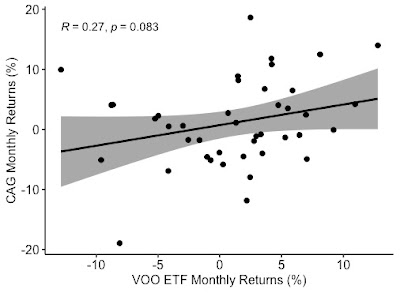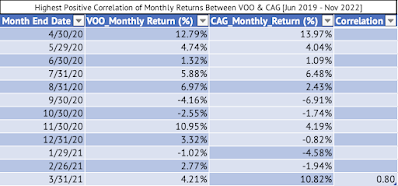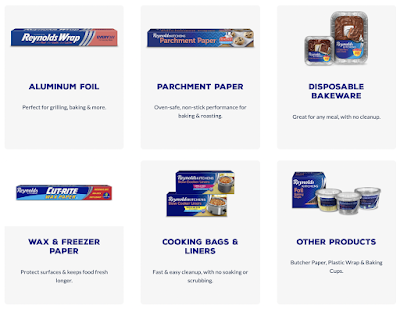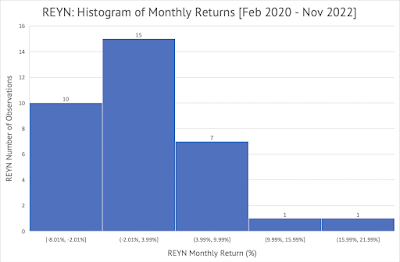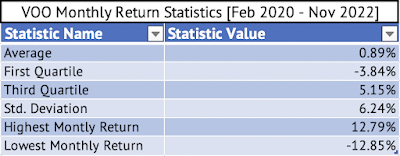What can we learn from the success of Costco?
Summary:
- An analysis of Costco and Walmart's revenue growth over the past eight years.
- A look at the gross margins of these two retailers.
- An analysis of the inventory costs of these retailers.
Costco (COST) is one of the most successful retailers in the world. It has a loyal customer base, its employees are among the highest paid in the retail sector, and that leads to lower employee turnover, and it has a very generous return policy, furthering its customer loyalty. The company presents multiple paradoxes. Here are just a few:
- How is Costco, with such low gross margins, not only still in business but thriving in the highly competitive retail sector?
- How does Costco succeed in the internet era when its e-commerce strategy is an afterthought?
- How does a retailer who pays and treats employees so well, but still manages to deliver superior shareholder returns?
Each retail company is unique in its own way. In many ways, uniquesness is a required feature for retailers. If a retailer is unable to distinguish themselves from the competition, they will not last long. Even among a crowded field of retailers, Costco and Trader Joe's standout. About 80% of products Trader Joe's sells is private label. In comparison, the U.S., with companies with strong brands and billions in marketing budgets, has seen only a 20% penetration by private label brands. Other retailers are yet to replicate Trader Joe's success in private label. Costco, for its part, does well with its Kirkland private label brand, selling many products under this label. Since this is an article about Costco, let's turn our attention to this great American company.
Costco Wholesale is unique in it own way. The way company operates and caters to its customers is a study in human psychology. Over 90% of its members renew each year. The store delivers a treasure hunt experience because you never know what you will find in each aisle. The aisles remain unmarked yet customers aren't frustrated. Over the years Costco has trained its customers to have a mental map of where they could typically find essential items. For example, paper towels and cleaning supplies are typically found at the back of the store.
Costco's executive memberships cost $130 annually yet, over 35 million out of their 76 million total members chose this level rather than pay $65 for the Gold Star membership (Exhibit 1). People perceive much value received from their executive membership. Members know Costco will never overcharge them. The company prides itself in keeping its mark-up 14%-15% above its costs, an extremely low number for a retailer. Costco pays a 2% reward on purchases to their executive members which many feel will help them recoup their membership cost. This reward eats into their already tiny margins, but Costco chose loyal customer base over higher margins. I am willing to theorize that consumers, if given a choice to pick between Amazon Prime and Costco memberships, will overwhelmingly pick Costco.
Exhibit 1: Costco Q4 FY 2024 Membership Numbers and Renewal Rate.

What are Costco's Revenue and Growth Rate?
Since 2008, Costco has increased its revenue by 3.5x, from $72 billion to $254 billion in 2024 (Exhibit 2). During the same period, Walmart (WMT), a much larger company, increased its revenue by 1.7x, from $377 billion in 2008 to $648 billion in 2024 (Exhibit 3). Just when people think that the market is saturated with Costco Warehouses, it finds new locations and customers. It has been expanding in China for years, although this comes with a side of geopolitical risk.
Exhibit 2: Costco Wholesale Revenue (2008 - 2024)

Exhibit 3: Walmart Revenue (2008 - 2024)

Costco's revenue grew at an average annual rate of 8.2% between 2008 and 2024. But, if you remove the pandemic-era binge shopping between 2020 and 2022, the growth rate was 6.9%, still an impressive number. Walmart averaged a revenue growth rate of 3.4% between 2008 and 2024, including the pandemic years.
Exhibit 4: Costco's Annual Revenue Growth Rate.

Exhibit 5: Walmart's Annual Revenue Growth Rate.

What are Costco's Gross Margins?
Costco has one of the lowest gross margins among retailers. Costco's gross margin in 2024 was 12.6% compared to 27.6% for Target (TGT), and 24.3% for Walmart. This is by design and may be their secret weapon. A company has to have strict financial discipline when it starts off with such low gross margins. Richard Galanti, the former CFO of Costco, was adept at managing costs. For the most part he was Costco's voice in Wall Street, presenting at the company quarterly earnings calls. Richard managed Costco's investments well, from inventory costs, new store openings, and e-commerce expenditures.
Costco's gross margins are well below that of Target and Walmart.
Exhibit 6: Gross Margins of Target, Walmart, and Costco.

How does Costco's Inventory Costs Compare with Walmart's and Target's?
Inventory is one of the largest costs for any retailer. When managed efficiently, inventory can boost operating cashflows and margins. When managed poorly, inventory can lead to losses or worse, bankruptcy.
Days of Sales in Inventory ( DSI) is a good metric to measure the efficiency of a company's inventory costs. This ratio indicates the average time in days it takes a company to sell its inventory. This metric also helps comparing inventory management efficiency across companies in a sector. Costco carries the least amount of inventory as possible on its balance sheet. It also helps that its loyal customer base regularly shops at the stores and helps clean out their inventory quickly.
Costco manages its inventory very efficiently compared to Walmart or Target. Costco manages to turnover its inventory every 31 days compared to nearly 41 days for Walmart and 56 days for Target (Exhibit 7 & 8). I have used ending inventory for each fiscal year in this calculation. When the ending inventory is used to calculate the days sales in inventory, the average number of days for Costco to turnover its inventory is 31.2 days.
Exhibit 7: Days Sales In Inventory For Walmart, Target, Costco.

Exhibit 8: Costco Revenue, COGS, Gross Margin, and Days Sales in Inventory (Using Ending Inventory)

In Exhibit 9, I have used the average inventory to calculate the days sales in inventory. The average number of days it takes Costco to turnver its inventory in this case is 29.9 days.
Exhibit 9: Costco Revenue, COGS, Gross Margin, and Days Sales in Inventory (Using Average Inventory)

Costco teaches us that margins are just a number. How you manage that efficiently while focusing on delivering value to the customer is what makes or breaks a company. Costco focus on keeping costs low for their customers helps it sell more stuff faster reducing its inventory costs and giving it enormous clout over its suppliers.
Finally, I have used Snowflake Data Cloud for almost all of my analysis. Snowflake platform is easy to use to gain business insights. I have shown you example of that here.
Disclosures: I am a Sales Engineer at Snowflake. You can reach me here. All opinions in this blog post are solely mine and do not reflect Snowflake's views. I am not a Registered Investment Advisor, and any discussion on securities or investments is not an inducement to make a particular investment.









